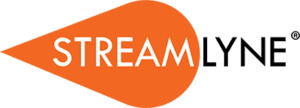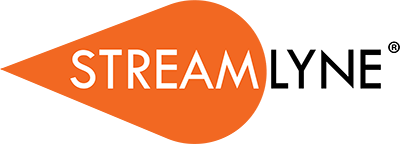
Finding funding opportunities shouldn’t feel like searching for a needle in a haystack. Yet for many research institutions, that’s exactly what grant discovery has become—a time-consuming process that drains resources and leaves opportunities on the table. The right grant software tool can transform this challenge into a strategic advantage, but with so many options available, how do you choose the one that will truly move the needle for your institution?
Understanding What Makes a Grant Software Tool Effective
A grant software tool is more than just a database of funding opportunities. The most effective platforms combine comprehensive data aggregation with intelligent matching capabilities that connect researchers with relevant funding sources. When evaluating options, research administrators and VPRs need to look beyond basic search functionality and consider how the tool will integrate into existing workflows and actually drive results.
The best grant software tools serve dual purposes: they empower individual researchers to find funding that aligns with their specific expertise, while simultaneously providing institutional leaders with the data and insights needed to make strategic decisions about research development priorities.
Key Features That Separate Good from Great
Natural language search capabilities have become essential in modern grant software tools. Researchers shouldn’t need to learn complex Boolean operators or memorize database-specific syntax. When a faculty member can simply type “environmental science grants over $500K for coastal restoration” and get relevant results, adoption rates skyrocket and more opportunities get pursued.
AI-powered matching takes this a step further. Rather than relying solely on keyword matching, advanced grant software tools analyze researcher profiles, publication histories, and institutional strengths to surface opportunities that might not be obvious through traditional search methods. This is where hidden funding sources get discovered—those lesser-known grants that competitors overlook.
Integration capabilities matter enormously for institutional success. A grant software tool that connects with Slack, Microsoft Teams, or other communication platforms ensures that opportunities don’t get buried in email inboxes. Real-time notifications mean researchers can respond quickly when new funding becomes available, improving competitiveness.
The ROI Question: Justifying Your Grant Software Tool Investment
For VPRs and research administrators, the decision to invest in a grant software tool ultimately comes down to return on investment. The math is actually quite straightforward: if the tool helps secure even one additional major grant per year, it typically pays for itself many times over.
But ROI extends beyond just dollar amounts. Consider the time savings: how many hours do your research development staff spend manually searching databases, compiling opportunity lists, and matching faculty to funding sources? A quality grant software tool automates much of this work, freeing up staff to provide higher-value consultation and proposal development support.
Faculty satisfaction is another often-overlooked benefit. Researchers who feel supported in their funding efforts are more engaged, more productive, and more likely to stay at your institution. In today’s competitive academic environment, a robust grant software tool is increasingly viewed as essential infrastructure, not optional technology.
Avoiding Common Pitfalls in Grant Software Selection
Many institutions make the mistake of choosing a grant software tool based primarily on the size of its database. While comprehensive coverage matters, it’s not the only factor that drives success. A database with millions of opportunities is useless if researchers can’t efficiently find the ones relevant to their work.
Another common pitfall is failing to consider the full user journey. A grant software tool might look impressive in a demo, but if it requires extensive training or has a clunky interface, adoption will suffer. The best platforms combine powerful capabilities with intuitive design that researchers can start using effectively on day one.
Don’t overlook the importance of ongoing support and updates. The funding landscape changes constantly, with new programs launching and others sunsetting. Your grant software tool provider should be actively maintaining and expanding their database, not just selling access to a static resource.
The Team Building Dimension
One often-underappreciated feature in grant software tools is the ability to facilitate team formation. Many major funding opportunities require multidisciplinary collaboration, and identifying the right partners can be as challenging as finding the grant itself.
Advanced grant software tools now incorporate features that help researchers discover potential collaborators based on complementary expertise, publication records, and past funding success. This team-building capability can be transformative for institutions looking to pursue larger, more ambitious projects.
For research administrators, these features provide valuable intelligence about institutional capacity. You can identify gaps in expertise that might be limiting your competitiveness for certain funding programs, informing strategic faculty recruitment decisions.
Making the Data-Driven Case
When presenting a grant software tool investment to institutional leadership, arm yourself with data. Benchmark your current grant application success rates, proposal submission volumes, and average award sizes. Then project realistic improvements based on increased opportunity discovery and better grant-researcher matching.
Include qualitative data too. Survey your faculty about pain points in the grant search process. Document how much time research development staff spend on manual activities that could be automated. Calculate the opportunity cost of missed funding due to limited awareness or slow response times.
Many grant software tool providers can share case studies from similar institutions. These real-world examples of increased funding success can be compelling evidence for decision-makers who need to see proof of concept before committing resources.
The Competitive Landscape Has Changed
The reality is that grant competition has intensified dramatically. Federal funding agencies receive far more qualified applications than they can support. Private foundations and corporate sponsors have their pick of excellent research partners. In this environment, efficiency and strategic positioning matter more than ever.
Institutions that invest in sophisticated grant software tools gain a measurable advantage. They’re finding opportunities earlier, building stronger teams, and submitting more competitive proposals. Those still relying on manual searches and ad-hoc processes are falling behind.
Implementing for Maximum Impact
Selecting the right grant software tool is only half the battle—implementation matters enormously. Start with a clear communication strategy that helps researchers understand not just how to use the platform, but why it will benefit them personally. Focus on quick wins that demonstrate value early.
Consider creating institutional ambassadors: identify enthusiastic early adopters who can share their success stories and help colleagues get up to speed. Integrate grant software tool training into new faculty orientation and provide ongoing professional development opportunities.
Track metrics from day one. Monitor usage patterns, opportunity discovery rates, and ultimately, proposal submissions and funding success. This data will justify continued investment and help you optimize how the tool is deployed across your institution.
Ready to Transform Your Grant Discovery Process?
The right grant software tool doesn’t just make finding funding easier—it fundamentally changes how your institution approaches research development. From uncovering hidden opportunities to building stronger collaborative teams, modern platforms like FundFit AI are helping research institutions maximize their funding potential.
FundFit combines AI-powered matching, natural language search, and seamless team collaboration tools to ensure you never miss an opportunity that matters. With HERD Survey integration and transparent AI reasoning, you’ll have both the opportunities and the insights needed to make strategic decisions.
Discover how FundFit can increase your research funding success: https://streamlyne.com/fundfit

